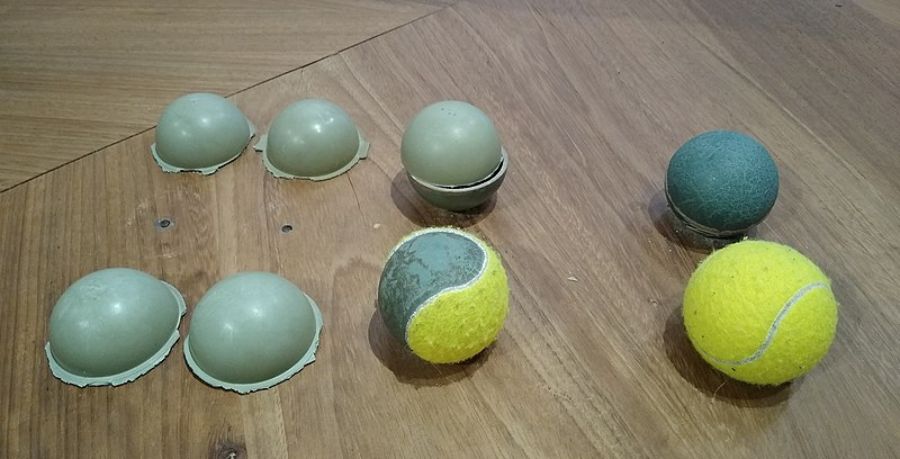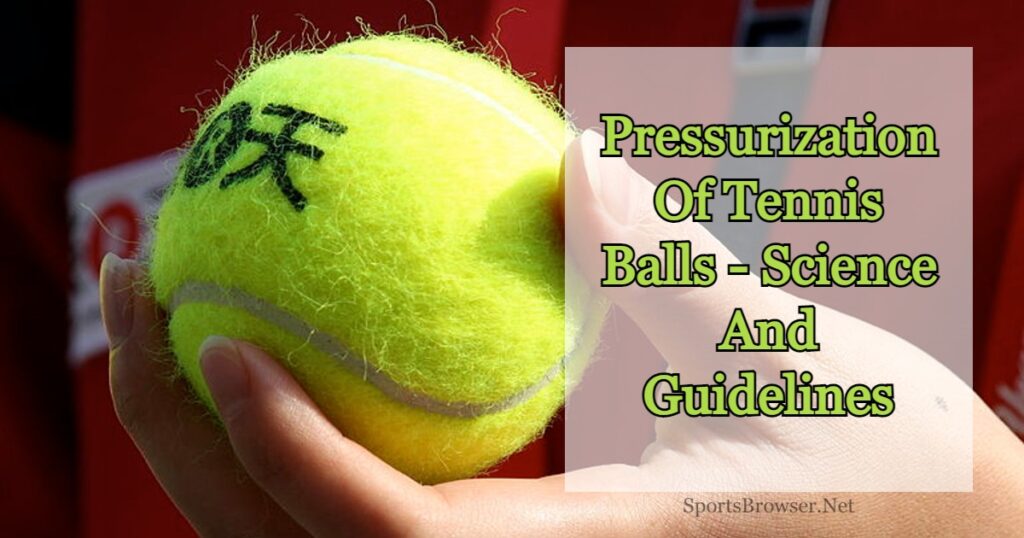Why Are Tennis Balls Pressurized? Reasons & Science Behind It
Tennis, one of the most popular sports, is now enjoyed by millions of people around the world. Tennis balls are specially designed to provide the perfect amount of bounce, speed, and spin. But have you ever wondered why tennis balls are pressurized?
There is a strict guideline of ITF that states the ideal pressure of a tennis ball should remain between 12 psi and 16 psi. And pressurization is done for various reasons. The right pressure in tennis balls can ensure better speed, performance, and bounce.
But that’s not all! So now, let’s look at the science and real reasons behind tennis ball pressurization and how it works in a real-world scenario.
Why Are Tennis Balls Pressurized?
Tennis balls are pressurized to ensure that they bounce consistently and maintain their shape.
When a tennis ball is pressurized, it creates an internal pressure that allows the ball to bounce with the ideal level of force. This pressure also prevents the ball from losing its shape over time.
If a tennis ball is not pressurized, it will become flat and lose its ability to bounce. The pressurization of tennis balls is necessary to ensure that the ball remains bouncy and maintains its shape throughout the match.
What Is The Ideal Pressure For Tennis Balls?
The International Tennis Federation (ITF) has set guidelines for the ideal pressure of tennis balls.
According to the ITF, the pressure inside a tennis ball should be between 12 and 16 pounds per square inch (psi) or 0.83 to 1.10 kilograms per square centimeter (kg/cm2).
This pressure range ensures that the ball will bounce consistently and maintain its shape.
Bonus: Why Do Tennis Players Grunt? Real Reasons & Science Behind It
How Are Tennis Balls Pressurized?
The process of pressurizing tennis balls involves sealing the ball and injecting compressed air inside. Tennis balls are typically made up of a rubber shell with a felt cover. The below-mentioned steps are commonly followed while pressurizing a tennis ball:
- Step 1: Use a special pressurizing machine that is designed for tennis balls.
- Step 2: Place the tennis ball inside the machine and seal it.
- Step 3: The machine will then inject compressed air into the ball to reach the ideal pressure range.
- Step 4: Once the ideal pressure is achieved, the ball is removed from the machine and is ready for use.
Note: The pressurization process of tennis balls is a bit more complicated than pressurizing a soccer or rugby ball. It needs professionals and special machines to do that.
Read More: Who Invented Tennis? – The History, Origin, And Evolution
What Is The Difference Between Pressurized And Non-Pressurized Tennis Balls?
Pressurized and non-pressurized tennis balls have significant differences. Pressurized tennis balls have compressed air inside, while non-pressurized tennis balls do not.
The table below shows the differences between the two types of tennis balls:
| Properties | Pressurized Tennis Balls | Non-Pressurized Tennis Balls |
| Bounce | Consistent | Inconsistent |
| Speed | Faster | Slower |
| Spin | Easier to spin | Harder to spin |
| Life | Shorter lifespan | Longer lifespan |
Why Do Tennis Balls Come In Pressurized Containers?
Tennis balls are sold in pressurized containers to keep them at the ideal pressure until they are ready for use.
The pressure inside a tennis ball will slowly decrease over time, even if it is not used. By storing tennis balls in a pressurized container, the balls will maintain their ideal pressure until they are opened.
Popular Post: What Color Is A Tennis Ball? Regulations And Current Debate
What Is The Average Life Of Tennis Balls?
The lifespan of tennis balls depends on several factors, such as usage, storage, and conditions. On average, tennis balls can last for several weeks to a few months.
However, after a few matches, the pressure inside the ball will decrease, causing the ball to lose its bounce and become less effective.
It is recommended to replace tennis balls regularly to ensure that they are performing at their best. Many good tennis academies also have their own set of rules to maintain ideal pressure for their training balls.

Can You Pressurize A Flat Tennis Ball?
Unfortunately, it is not possible to pressurize a flat tennis ball. Once a tennis ball loses its pressure and goes flat, it cannot be restored to its original state through pressurization.
A flat tennis ball has lost its internal pressure, and the rubber shell has likely started to deteriorate. At this point, the ball has reached the end of its useful life and should be replaced.
Related Post: How Much Does A Tennis Ball Weight? Mass & Diameter
Final Note
By understanding the importance of tennis ball pressurization, players can ensure that they are using the best equipment to enhance their performance on the court. So, it is best to check the size, shape, and pressure before you start your training.
You can also take the help of your coach or any pro tennis player to know about the current pressure condition of your tennis balls. So, that’s all for today! Feel free to drop your queries in the comment section below.







